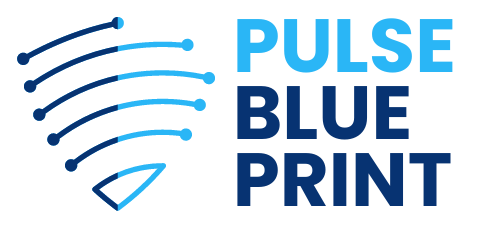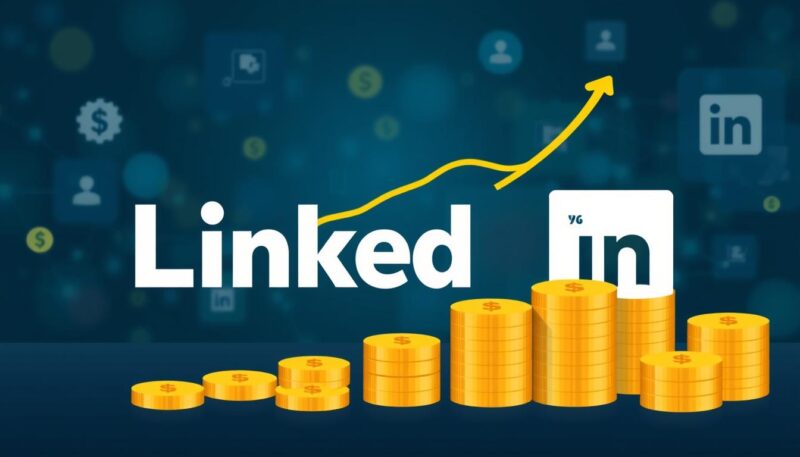LinkedIn, the largest professional networking platform globally, is a vital resource for anyone looking to advance their careers, connect with like-minded professionals, or explore new opportunities. With over one billion users and approximately 19,400 employees worldwide, LinkedIn has established itself as an indispensable tool in the professional landscape. Since being acquired by Microsoft in December 2016 for a staggering $26.2 billion, the platform has continually evolved, generating impressive LinkedIn revenue that reflects its growing significance.
In the fiscal year ending June 30, 2023, LinkedIn reported $15.1 billion in revenue, demonstrating a consistent upward trend—up from $10.2 billion in 2021 to $13.8 billion in 2022. Additionally, with a year-over-year revenue growth of 5% in 2023, the LinkedIn business model has proven resilient in a competitive market. The platform makes money through various channels, primarily focusing on premium subscriptions and tailored business solutions that set it apart from other social media sites, which often rely heavily on advertising.
With an impressive revenue contribution of about $7 billion from Talent Solutions, which accounts for roughly 65% of LinkedIn’s total revenue, it’s essential to understand how these revenue streams work. Other significant segments include Marketing Solutions, which also plays a crucial role in the overall financial picture. As we delve deeper into how LinkedIn generates income, it becomes clear that the platform’s unique approach to professional networking continues to yield valuable rewards for both users and stakeholders.
Understanding LinkedIn’s Revenue Streams
To grasp how LinkedIn generates revenue, one must delve into its structured business model, which balances free and premium services. This approach allows LinkedIn to host a vast network while capitalizing on its premium offerings for businesses and professionals. With over 500 million users across more than 200 countries, LinkedIn stands out as a powerhouse in B2B marketing and HR technology.
Overview of LinkedIn’s Business Model
LinkedIn’s business model primarily operates on a freemium basis, where users can access basic features for free, yet premium services are available for a fee. This dual strategy enables LinkedIn to maintain a massive user base while monetizing the platform effectively. Revenues are derived from several segments, each contributing distinctly to overall LinkedIn revenue.
Key Revenue Segments
Three core segments drive LinkedIn’s revenue:
- Talent Solutions: This segment is the largest contributor, accounting for 65% of LinkedIn’s total revenue. It offers various tools for recruiters and companies seeking to hire talent.
- Marketing Solutions: Contributing about 18% to LinkedIn’s revenue, this segment provides businesses with advertising options designed to engage its unique professional audience.
- Premium Subscriptions: Subscriptions accounted for 40% of LinkedIn’s revenue in 2020. They include a range of services that cater to various professionals, enhancing their networking capabilities.
Growth Metrics and Financial Performance
LinkedIn’s financial performance showcases significant growth, especially since its acquisition by Microsoft. In fiscal year 2021, the platform achieved remarkable revenue milestones, bringing in $10 billion, reflecting a 27% increase from the previous year. The user engagement also surged, with active members increasing from about 450 million to 774 million.
As LinkedIn continues to enhance its services, particularly in digital marketing and learning solutions, it stands as a frontrunner in the industry. With unique features that benefit both job seekers and companies, LinkedIn is poised to maintain its position at the center of professional networking.
How Does LinkedIn Make Money
LinkedIn has evolved into a robust platform for professionals, offering various monetization strategies that cater to both users and advertisers. Through premium subscriptions, job advertising, and marketing solutions, LinkedIn generates impressive revenue. Understanding these mechanisms provides insight into how the platform remains profitable and relevant in the competitive landscape.
Premium Subscriptions
Premium subscriptions are a key revenue source for LinkedIn. Users can choose from several tiers of membership, each offering unique features such as enhanced search capabilities and direct messaging to potential contacts via InMail. These subscriptions are particularly popular among job seekers, recruiters, and business professionals aiming to expand their networks. The appeal of premium features aids in driving substantial SaaS revenue, as users find value in upgraded tools that facilitate their professional growth.
Job Advertising and Talent Solutions
LinkedIn’s job advertising and recruiting services form another significant component of its revenue model. Recruiters and hiring managers benefit from tools designed to help them find top talent, making it easier to post jobs and reach ideal candidates. This segment generated approximately $7 billion in the fiscal year 2023. With offerings such as LinkedIn Recruiter, companies gain access to extensive candidate data, while recruitment advertising enables targeted job promotions. By leveraging these services, businesses can efficiently fill positions, enhancing overall recruitment effectiveness.
Marketing Solutions
Beyond recruitment, LinkedIn also provides marketing solutions for businesses looking to increase their visibility. The platform’s advertising capabilities allow companies to create tailored LinkedIn Ads that effectively reach their target audience based on demographics and professional interests. By promoting products or services, businesses can elevate their brand presence in a professional context, capitalizing on high engagement rates that LinkedIn users exhibit compared to other social media platforms. This focus on B2B marketing not only drives revenue for LinkedIn but also fosters valuable connections among diverse professionals.
| Revenue Stream | Description | Approximate Revenue |
|---|---|---|
| Premium Subscriptions | Tiered access to advanced features for job seekers and business professionals. | Significant portion of SaaS revenue |
| Job Advertising | Recruiting services via targeted job postings and tools for finding talent. | $7 billion in FY 2023 |
| Marketing Solutions | Advertising options for businesses, including demographic-based targeting. | Growing revenue stream from B2B advertising |
Additional Revenue Generators
LinkedIn has developed various tools for driving revenue beyond its primary income sources. These additional generators enhance user engagement while providing valuable resources for companies seeking professional development and data-driven insights.
Learning Solutions and Online Courses
LinkedIn Learning serves as a cornerstone of LinkedIn’s online learning offerings, providing access to a vast library of courses covering a wide range of professional skills. Users benefit from a subscription model, allowing both individuals and organizations to reinforce their knowledge and skills. This platform is essential for enhancing professional development, as it helps users stay competitive in today’s evolving job market.
Data Insights and Analytics
Through data monetization, LinkedIn leverages its robust repository of user data to deliver insights and analytics to businesses. Offering access to demographic data, job market trends, and talent insights, LinkedIn positions itself as a valuable partner for companies looking to refine their recruitment strategies and enhance market research. By packaging this information, LinkedIn creates a significant revenue stream while supporting businesses in making informed decisions.
Strategic Partnerships and Acquisitions
Fostering strategic partnerships and making acquisitions further diversify LinkedIn’s revenue streams. By integrating platforms like Lynda.com and SlideShare, LinkedIn expands its offerings and reaches new customer segments. These collaborations bolster service quality while adding value to the overall LinkedIn experience. Such strategic initiatives play a crucial role in sustaining growth in an increasingly competitive landscape.
| Revenue Generator | Source | Key Features | Target Audience |
|---|---|---|---|
| LinkedIn Learning | Subscription Fees | Online courses and tutorials | Individuals and organizations |
| Data Insights | Data Licensing | Market insights, talent analytics | Businesses and recruiters |
| Strategic Partnerships | Integration Services | Enhanced offerings, expanded reach | General user base and enterprises |
Conclusion
In summary, LinkedIn’s revenue models showcase an impressive strategy that effectively capitalizes on the nuances of professional networking. With a well-rounded approach comprising premium subscriptions, job advertising, and specialized business solutions, LinkedIn generates a substantial annual revenue stream, reported at $8.05 billion as of June 2020. This diversity not only underlines LinkedIn’s place as a powerhouse in social media monetization but also highlights its intrinsic value to its extensive user base, which has grown to over 722 million members globally.
The platform continues to innovate and enhance value for its users through offerings such as LinkedIn Learning and various digital marketing solutions. This adaptability is crucial in an ever-evolving marketplace, where understanding trends in professional networking is essential. By keeping pace with user needs and industry demands, LinkedIn reinforces its leadership position while also providing businesses with the tools necessary to succeed.
As LinkedIn progresses further into the realm of digital marketing and beyond, it has the potential to shape the future of professional engagement. The intertwining of its revenue-generating activities with user engagement creates a dynamic ecosystem that ensures sustained growth and relevance in a competitive landscape.

Hey, I’m Derek Vaughn. I love exploring how tech, business, and productivity come together to shape the way we work. At PulseBlueprint, I write about tools, trends, and strategies that actually make a difference—no fluff, just real-world insights.









